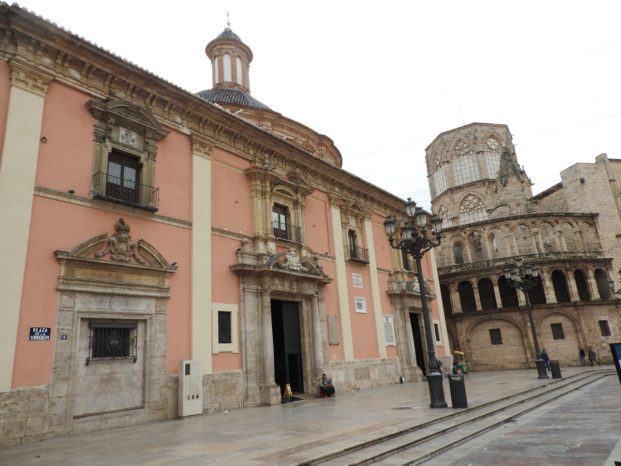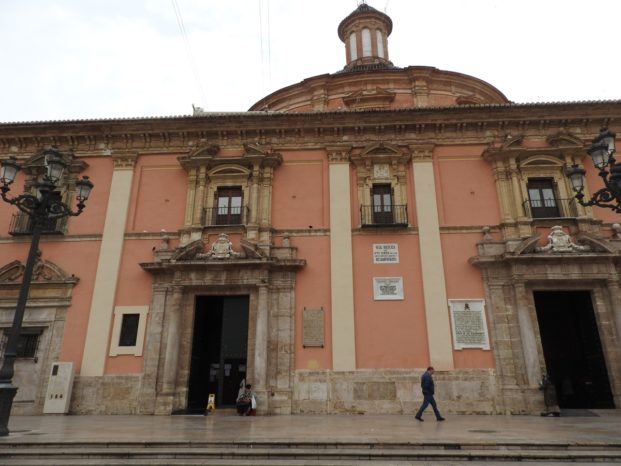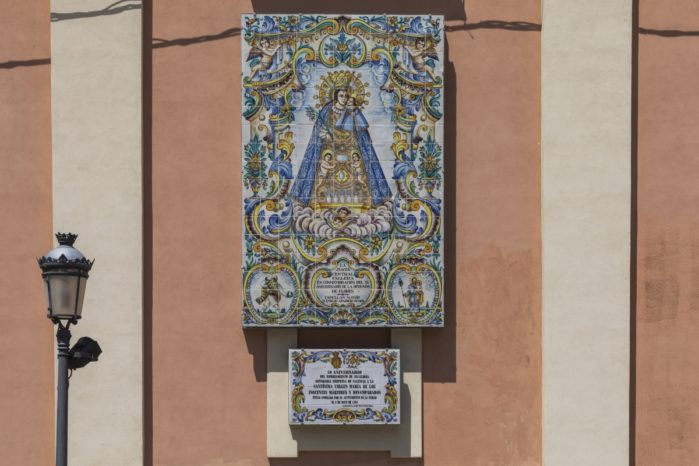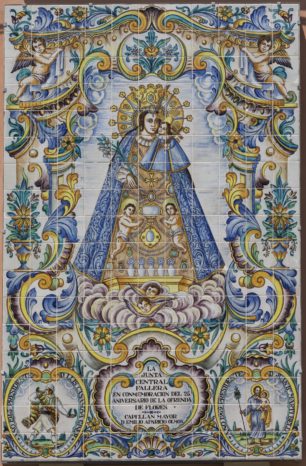Royal Basilica of Our Lady of the Forsaken
In the religious center of the city is the Basilica of Our Lady of the Forsaken. The building was erected in the seventeenth century between 1652 and 1667. It was built because the chapel of the Virgen de los Desamparados was insufficient, it was installed in 1489 in the apse of the cathedral due to the transfer of the original one that was next to the General Hospital. This chapel was located in the centre of the apse under the arch linking the basilica with the cathedral. It is a trapezoidal building with an oval inside and a camarin designed by Diego Martínez Ponce de Urrana. The dome covering the central space is also oval. Next to it develops the square camarin where the image of the Virgin of the Forsaken. It was made between 1685 and 1694, although it was already in the initial project. It is located behind the oval space and has access from both sides.
In the late seventeenth or early eighteenth century the extension of the chapel was proposed. For this, an anonymous project preserved in the basilica was carried out, possibly contemporary with Palomino's intervention in the dome. The main chapel was pushed back to the camarin and elements such as the entablature, whose frieze was decorated with attributes of the church, were remodelled. It was at this time that the walled tile vault was made under an earlier one. The current false vault was made in 1701 by Antonio Palomino. Between 1758 and 1763 a new main altarpiece was designed by Ignacio Vergara. A few years later, between 1763 and 1767, reforms were made to the building carried out by Vicente Gascó. The medallions with paintings were made by José Vergara. The Communion Chapel was built around 1775 by Vicente Gascó. This was greatly transformed after the Civil War, although its original layout is known, due to the plans of Gascó's disciple, Francisco Pechuán. At the end of the eighteenth century works were planned that would finally be carried out in 1824. The high altar was made with marbles and with an academic design.
In the factory of the basilica, the tile carved and planted in window nozzles is used. Both the doors and windows of the façade and the drum, pilasters and columns are grouped in different planes, with crebants in the frames and pediments. During the work carried out for the foundation of the building, Roman tombstones appeared that were used on the plinth of the building. Outside, the two doors of the Plaza de la Virgen stand out and the entrance at the foot of the temple in front of the cathedral, which is in a narrow alley. The two doorways, of similar characteristics, are of lintel with pilasters and columns flanking the entrance opening. They are topped with a split curved pediment in the center of which is a shield. Balconies open over the doors that repeat the decorative elements.




Dades bàsiques
Plaza de la Virgen
46001 Valencia